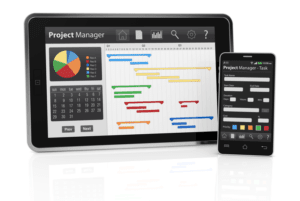
Discounts can be used to incentivize customers to make a purchase or to reward customers for loyalty. When discounts are given, businesses must recognize the short-term effect of the discount on cash flow. This is mainly an incentive to the purchasing party to settle the bill earlier than the prescribed date. In summary, purchase discounts provide businesses with many significant short and long-term benefits and should be used regularly to keep customers returning. At the date of purchase the business does not know whether they will settle the outstanding amount early and take the purchases discount or simply pay the full amount on the due date.

Accounting for Purchase Discounts: Net Method vs Gross Method
Let’s assume Craig’s Retail Outlet purchase $1,000 worth of shirts from a manufacturer with credit terms of 2/10, n/30. Craig will receive a $20 discount if he makes his payment during the 10-day discount period otherwise he will owe the entire $1,000 at the end of the month. This might sound like a small reduction in price, but it can add up if every purchase a retailer makes is reduced by the same percentage.
Trade Discount
- The net amount is not mentioned earlier on in the analysis because it is still not confirmed if the company will be able to pay the dues in time to be able to avail of the cash discount.
- This is because it records the effect of the discount at the time of purchase, rather than later when payment is made.
- Before we proceed with the accounting entries, it is necessary to first distinguish between the two types of discounts being offered by BMX LTD.
- The gross method of recording purchase discounts records the purchase and the payable at the gross amount before any discount.
- This allows the manufacturers to increase their sales, but it also reduces their cash flow because cash from the sales isn’t being received immediately.
Remember, the discount does not apply to shipping costs that are passed through to the buyer. The general rule is that all the costs we incur to get the product on the shelf and ready to sell are product costs. The freight we pay to get the sound systems into our shop is part of the cost of the inventory. In other words, instead of the unit cost being $100, it is actually $103.50 (total cost, including freight, of $20,700 divided by 200 units). We learned that shipping terms tell you who is responsible for paying for shipping.

How confident are you in your long term financial plan?

On the application, they will state the amount that they wish to contribute to the plan (which is usually limited to about 10% of their take-home pay). Contributions are also limited to $25,000 per the calendar year by the IRS, regardless of any restrictions imposed by the employer. After each pay period, the employee deferrals are placed in separate accounts until the https://www.bookstime.com/ purchase date. The stock is then held in separate accounts for each employee by a transfer agent or brokerage firm until they sell their shares and collect the proceeds. However, in accounting, we have to differentiate between purchases as explained above and other purchases such as those involving the procurement of a fixed assets (e.g. factory machine or building).
AccountingTools
In these circumstances the business needs to record the full amount of the purchase when invoiced and ignore any discount offered in the supplier terms. If the business pays within 10 days then a 2% purchase discount amounting to 30 can be deducted what type of account is purchase discount from the purchase invoice, and the business will pay only 1,470 to settle the supplier account. When a business purchases goods on credit from a supplier the terms will stipulate the date on which the amount outstanding is to be paid.
The same as the perpetual inventory system, there is a journal entry needed under the gross method to record the adjustment of discount lost. However, under the net method, we need to record adjusting entries to recognize the loss of the discount. If the business does not pay within the discount period and does not take the purchase discount it will pay the full invoice amount of 1,500 to the supplier and the discount is ignored. Outside of the wages and salaries, one common method of compensating employees in today’s corporate environment involves the purchase of company stock. The Employee Stock Purchase Plan (ESPP) offers a very straightforward method of allowing employees to participate in the overall profitability of the employer over time. The discount expense and discount income are recorded on the debit side and credit side of the treble column cash book respectively.
Financial Accounting
- However, if the payment is not settled within 15 days, the full amount will be due at the end of 30 days.
- Purchase discounts, by nature, are supposed to decrease the purchase costs of the company.
- Our work has been directly cited by organizations including Entrepreneur, Business Insider, Investopedia, Forbes, CNBC, and many others.
- A purchase also results in increase in inventory, however the accounting for inventory is kept separate from accounting for purchase as will be further discussed in the inventory accounting section.
- When a business purchases goods on credit from a supplier the terms will stipulate the date on which the amount outstanding is to be paid.
- The remaining sections of this article, therefore, pertain solely to qualified plans.
- Our writing and editorial staff are a team of experts holding advanced financial designations and have written for most major financial media publications.
The remaining sections of this article, therefore, pertain solely to qualified plans. The result is to reduce cost of goods sold by the amount of the discount taken. If the firm takes the discount, an account titled Purchase Discounts will be credited for the amount of the discount. Someone on our team will connect you with a financial professional in our network holding the correct designation and expertise.

Increasingly, businesses are beginning to use digital methods over traditional methods for many of their operations. Purchase discounts have become an essential business tool, allowing companies to reward customers for their loyalty or bulk orders. Keep reading to learn more about each accounting method and how to choose the right one for your business.

What are purchase discounts, and why are they important to businesses?
- A discount received is the reverse situation, where the buyer of goods or services is granted a discount by the seller.
- Also a general ledger account in which the purchase discounts are recorded under the periodicinventory method.
- The Purchases account is usually grouped with the income statement expense accounts in the chart of accounts.
- Accounting for purchase discounts, we can be recorded under either the net method or the gross method.
- Still, other methods might save time but require more resources or take longer to execute.
Cash discounts are offered when payment is made within a certain period of time, while trade discounts can be extended to customers who purchase large quantities of a product or to customers with established credit terms. In this journal entry, the purchase discounts is a temporary account which will be cleared to zero at the end of the period. Its normal balance is on the credit side and will be offset with the purchases account when the company calculates cost of goods sold during the accounting period.
Offering periods can be either consecutive or overlapping; those in the latter category will often have different purchase prices because of their staggered purchase dates. As the company does not record the inventory purchase under the periodic system, whether it receives the discount or not, the journal entry will not involve the inventory account like those in the perpetual system. As there are different types of inventory valuation, the purchase discount journal entry of one company may be different from another. This could be due to one company uses the periodic inventory system while another uses the perpetual inventory system. Therefore, to set that off, trade discounts are offered which incentivizes buyers of a certain product to pay early, at a cheaper cost.
